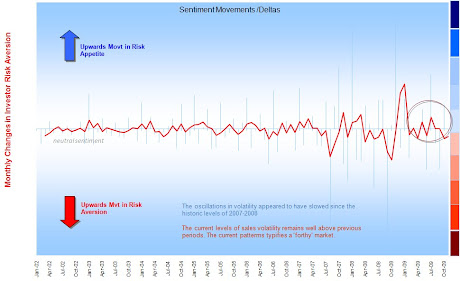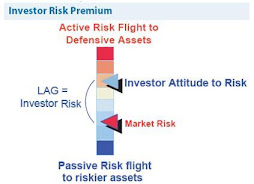Earthquake {def} "also known as a quake, tremor, or temblor) is the result of a sudden release of energy in the Earth's crust that creates seismic waves. Earthquakes are recorded with a seismometer, also known as a seismograph. The moment magnitude (or the related and mostly obsolete Richter magnitude) of an earthquake is conventionally reported, with magnitude 3 or lower earthquakes being mostly imperceptible and magnitude 7 causing serious damage over large areas. Intensity of shaking is measured on the modified Mercalli scale." Source: Wikipedia
The horrible events in Haiti (a natural occuring event) made me think about seismic activity and the randomness of when earthquakes occur.. are they a black swan.. Not all such activity is random, it often clusters around epicentres - in the case of earthquakes: the tectonic plates. So earthquakes are more often grey swans: i.e. they are hard to predict, often uncertain but there is some certainty that they will occur at some point and exhibit a peristency in certain geographic regions. It is more risky to live in one place than another.. However induced earthquakes are the result of human intervention and seem far less certain. a very extreme example of how an action for good can cause a very negative outcome. I certainly don't want to trivialise earthquakes; definitely not now, and I hope to avoid -
"a rash of earthquakes have struck along the Pacific coast of the Americas, including a 6.0 earthquake that struck Guatemala yesterday (18/01) and a somewhat strong one in Argentina the day before."
Induced seismicity - are our attempts to regulate a system perilous: one we created but since evolved to become more complicated than we can understand.. Does one action to stem risk create the next..?
Induced seismicity - "While most earthquakes are caused by movement of the Earth's tectonic plates, human activity can also produce earthquakes. Four main activities contribute to this phenomenon: constructing large dams and buildings, drilling and injecting liquid into wells, and by coal mining and oil drilling. Perhaps the best known example is the 2008 Sichuan earthquake in China's Sichuan Province in May; this tremor resulted in 69,227 fatalities and is the 19th deadliest earthquake of all time. The Zipingpu Dam is believed to have fluctuated the pressure of the fault 1,650 feet (503 m) away; this pressure probably increased the power of the earthquake and accelerated the rate of movement for the fault. The greatest earthquake in Australia's history was also induced by humanity, through coal mining. The city of Newcastle was built over a large sector of coal mining areas. The earthquake was spawned from a fault which reactivated due to the millions of tonnes of rock removed in the mining process."More real than notions of butterflies! "The phrase refers to the idea that a butterfly's wings might create tiny changes in the atmosphere that may ultimately alter the path of a tornado or delay, accelerate or even prevent the occurrence of a tornado in a certain location.. The butterfly effect is a metaphor that encapsulates the concept of sensitive dependence on initial conditions in chaos theory; namely that small differences in the initial condition of a dynamical system may produce large variations in the long term behavior of the system. Although this may appear to be an esoteric and unusual behavior, it is exhibited by very simple systems: for example, a ball placed at the crest of a hill might roll into any of several valleys depending on slight differences in initial position. 'Recurrence', the approximate return of a system towards its initial conditions, together with sensitive dependence on initial conditions are the two main ingredients for chaotic motion. They have the practical consequence of making complex systems, such as the weather, difficult to predict past a certain time range (approximately a week in the case of weather), since it is impossible to measure the starting atmospheric conditions completely accurately. " Source: Wikipedia. http://en.wikipedia.org/wiki/Butterfly_effect
So perhaps the problem in financial regulation is that it assumes 'domino effect': "The domino effect is a chain reaction that occurs when a small change causes a similar change nearby, which then will cause another similar change, and so on in linear sequence. The term is best known as a mechanical effect, and is used as an analogy to a falling row of dominoes. It typically refers to a linked sequence of events where the time between successive events is relatively small. It can be used literally (an observed series of actual collisions) or metaphorically (complex systems such as global finance, or in politics, where linkage is only a hypothesis)."
The tectonic plates: can we liken these to the money flows and correlations among sectors and asset classes..? Like markets; seismic activity is continual and analysed daily. Without intervention, earthquakes; like markets, will continue to display vary, grow and subside. Globally we track seismic activity intensely and in a very universal way; unlike financial markets, but shocks still continue (Haiti) - is this due to a lack of focus outside of the main regions of interest, an inherent ignornace of cause and effect, a lack of profit to care, are there lessons to learn for investors and regulators alike?
A 'seismic' notion is appealing because it gives some glimmer of hope of cause and effect to track volatility by; (even if the the lead time proves very short). This approach to volatility could allow for 3 attractive (and flexible) assumptions: 1) that volatility an have epicentres and ripple outwards to impact nearby asset classes (think China on Asia Pac, US on China on US.. domino effect) BUT also ripple along less obvious and non-geographic 'fault lines' of correlated classes (E.g. US-China, US Tech-Asia Tech, Global Property, US Treasury-EM Bonds, Commodities, Currencies.. butterfly effect) - perhaps caused by underlying liquidity changes during periods of market bubbles/crashes, behavioural decisions and conventional asset allocation techniques to sell from one asset class to buy another, or simply the globalisation of the financial market itself. 2) the location of epicentres can become random and unpredictable to track (just as correlations shift and sentiment/herding can become irregular - 'heteroskedastic') and lastly 3) intervention has/can create unexpected negative results (butterfly effect: from dotcom to credit crunch) and induce unexpected volatility.
Although these ideas have been considered (and discounted) many times; they have been largely tested through numbers rather than visually (consider the map below):
[def] "Causality is the relationship between an event (the cause) and a second event (the effect), where the second event is a consequence of the first." Can market volatility be mapped in this way?
Certainly central banks (amongst other things) set into motion a series of events in 2002 that later produced the credit crunch.. the primer was the low base rates - stimulating 'soft' borrowing.. and squeezing the returns of traditional debt markets.
If then we can't escape bull-bear cycles then why intervene? Political gain, control, fame, recognition, profit, morality.. are any of these worth the gambit?
Quote: "As far as I know, they are just sort of happening willy-nilly. And even, you know, one year to the other you can even get some fairly dramatic differences. For example, let me pull out a couple more numbers here. For example, in - there were relatively few earthquakes of this size in, say, 2009 compared to 2007. I mean, you do get year-to-year variety, but again, it - just because these things happen kind of unpredictably.Let's step back for a second and think about where earthquakes come from. You have the earth's plates, these tectonic plates, shifting past one another. And what happens is they don't move smoothly sort of over long periods of time. They rotate and they move past one another but they stick together. There's like friction that holds them still. So, basically, you have these two plates that are jammed together and eventually the stress builds up enough and bing. They release that stress all at once and that's an earthquake. So you have this kind of, you know, in the long term you know that = where the stresses are building up and how big an earthquake might be in a particular place. That's been fairly well established. But guessing when that rock is going to break, when that slip is going to happen, is beyond the realm of science right now. "NPR science correspondent Richard Harris, Jan 19thReplace "earthquakes" then for any market loss term of your choosing: risk, beta, drawdowns, recession, volatility, correction, dislocation...





26 Feb 2010 "SANTIAGO, Chile – A massive 8.8-magnitude earthquake struck Chile early Saturday, killing at least 78 people, collapsing buildings and setting off a tsunami.
ReplyDeleteA huge wave reached a populated area in the Robinson Crusoe Islands, 410 miles (660 kilometers) off the Chilean coast, said President Michele Bachelet.
Tsunami warnings were issued over a wide area, including South America, Hawaii, Australia and New Zealand, Japan, the Philippines, Russia and many Pacific islands.
"It has been a devastating earthquake," Interior Minister Edmundo Perez Yoma told reporters.
Bachelet said the death toll was at 78 and rising. She declared a "state of catastrophe" in central Chile."